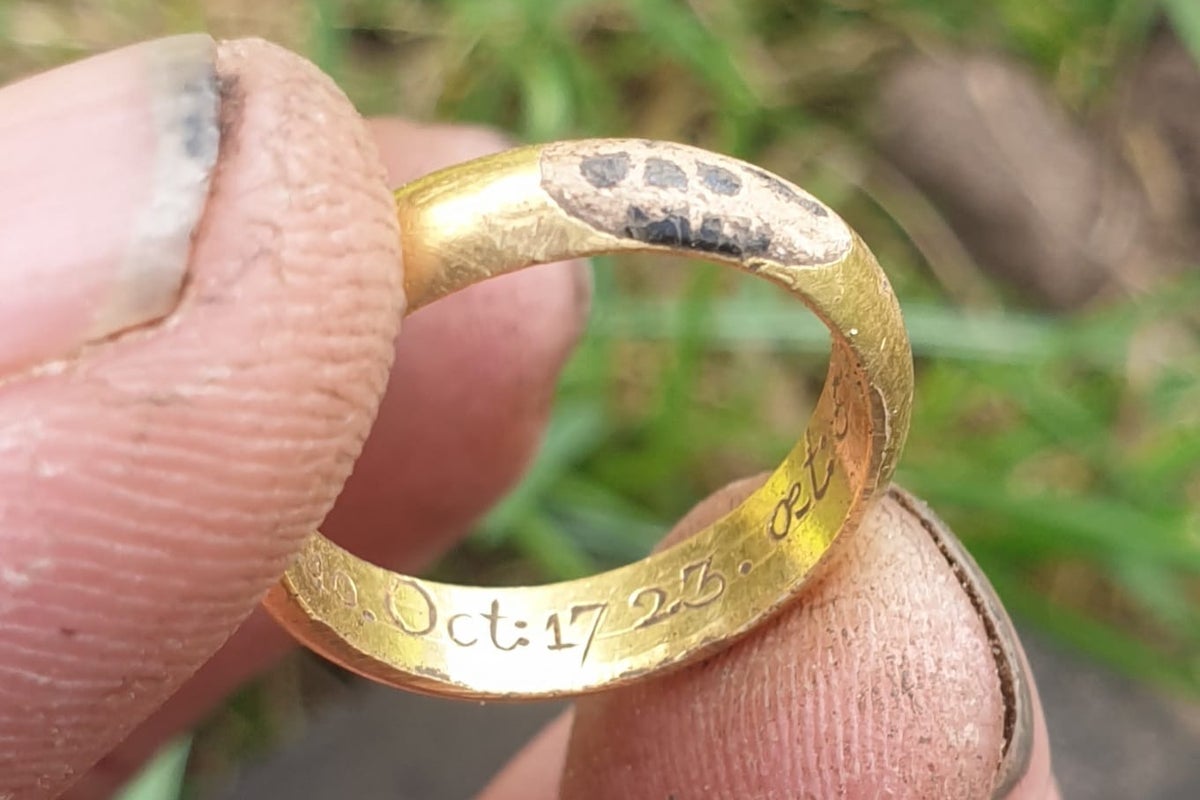A gold ring that had been lost for centuries has been found by a metal detectorist “gleaming in the sunshine”.
Malcolm Weale, 53, found the historic piece of jewellery in a field near Thetford, in Norfolk, in August.
The ring, crafted in gold and enamel, is a mourning ring linked to an ancestor of Gawdy Hall Estate in Norfolk.
It is thought to have been created in memory of Sir Bassingbourne Gawdy, the third baronet of Harling, who died in a hunting accident in 1723 at the age of 56.
The inscription on the ring reads “B.G. Bart. ob: 10. Oct: 1723. aet: 56”, which means “B.G. Baronet, died 10th October 1723, aged 56”, according to historian Helen Geake.
He is described as a bachelor who was ‘a notable sportsman’ and enjoyed ‘rackety exploits’ by The Oxford Dictionary of National Biography.
The ring has recently been declared treasure at Norfolk Coroner’s Court and will now be taken to the British Museum where it will be valued.
Describing the moment he found the 18th-century ring, Mr Weale said: “I knew this was something very special and I did a bit of a dance.”
Mr Weale, who has been a detectorist since he was seven years old, said he had been searching in the area for 18 months before finding the ring.
“Over the years I’ve found all sorts of treasures including a hoard of late Roman coins, gold rings and jewellery in the fields around my home in eastern England,” he said.
“Last year was a particularly good year for detecting as, thanks to the rainfall, the moisture levels in the ground were very high.”
Mr Weale said he had already found some medieval silver coins from King Steven to Henry VII in the same field, as well as some modern coins.
“With metal detecting you can spend days, weeks or months searching or sometimes just 20 minutes and make an amazing discovery,” he said.
“August 9 was a hot day, I had my detector in the car, and it turned out to be one of my best days.
“It was just the second signal and there it was, a glint of pure gold, shiny as the day it was dropped, six inches down in the mud.
“It’s very rare to put a name to anything you find, but I knew this was something very special and I did a bit of a dance.”
Last year he also found a “gold memorial ring, a medieval silver ring fragment, and the first and only Viking penny minted for Guthrum – a Viking warlord who became the first Viking king to convert to Christianity and ruled East Anglia in the 870s”.
It is thought that Sir Brews Gawdey, a French knight who was taken during the Hundred Years War, is the ancestor of the Gawdy family.
Although the Gawdy Hall estate is located in Norfolk, just north of the River Waveney, it seems that he was naturalised and lived in Suffolk after being captured in 1352.

